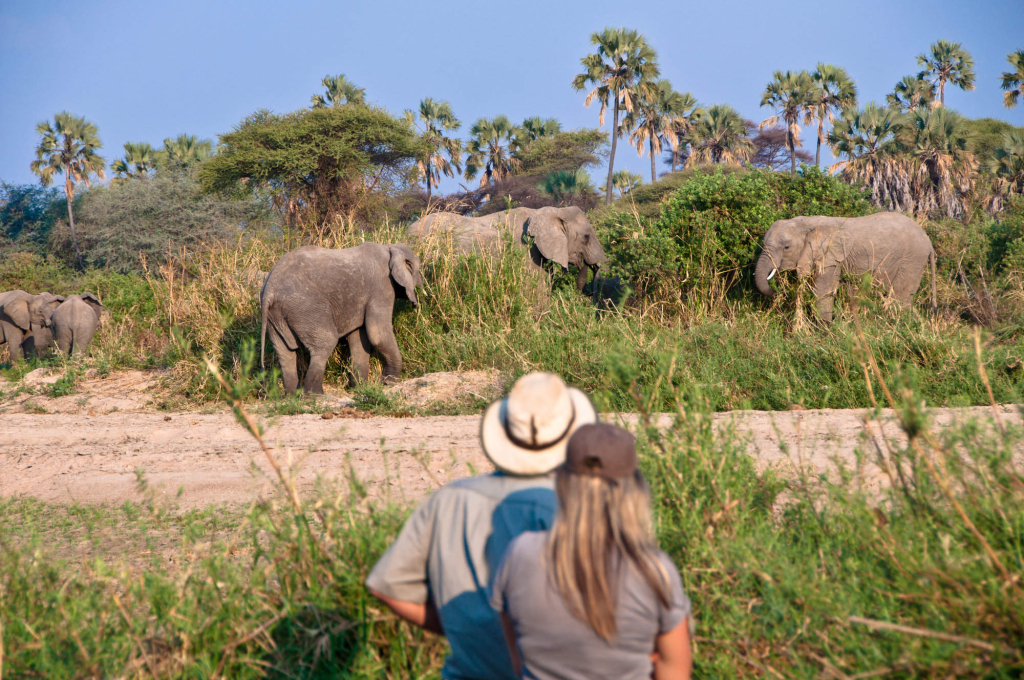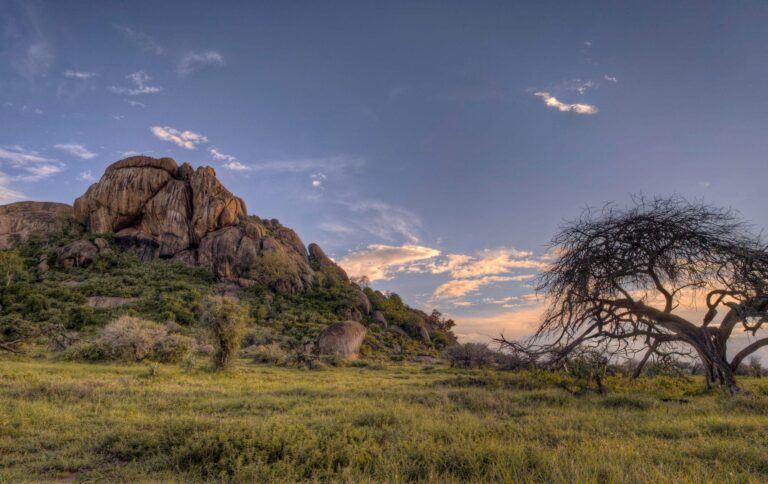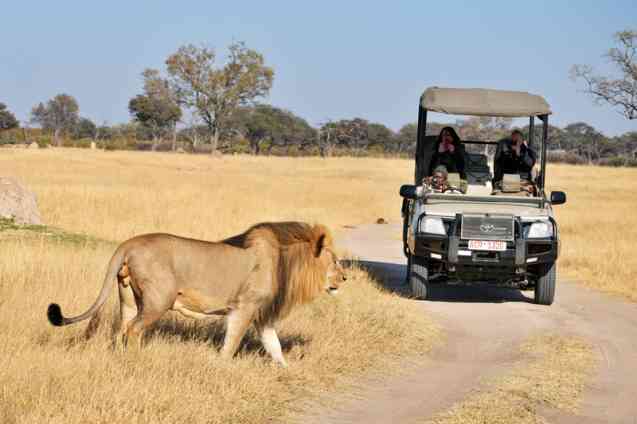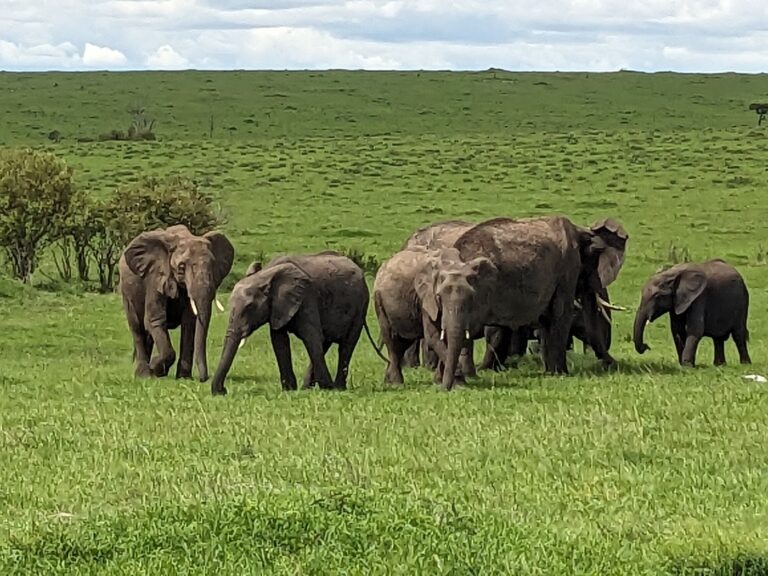Walking Safaris in East Africa
Exploring the raw East African wilderness on foot is one of the unmissable experiences because it offers an unbeaten and immersive experience that connects visitors deeply with Mother Nature. Alba Wonders Africa’s walking safaris lead wildlife and nature enthusiasts off the beaten track to observe wildlife, landscapes, and ecosystems from a unique perspective. Our ultimate guide provides detailed information on everything you need to know about walking safaris in East Africa.- From what to expect during these phenomenal adventures, how to prepare for them, the best time to go for them, to why we think these experiences shouldn’t be missed on your safari bucket list for East Africa.
What are walking safaris?
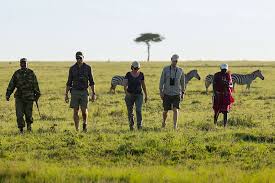 Walking safaris are expertly guided treks/hikes through the East African wilderness, where visitors explore Mother Nature on foot. Unlike game drives, where visitors remain in a 4X4 Safari vehicle, walking safaris focus on smaller, often ignored or missed aspects of the East African wilderness. Led by expert (and often armed) Ranger guides, walking safaris make it possible for visitors to gain a deeper appreciation for wildlife tracks, bird calls, insects, as well as the intricate details of the natural environments that make East Africa’s ecosystems exceptional and worth exploring.
Walking safaris are expertly guided treks/hikes through the East African wilderness, where visitors explore Mother Nature on foot. Unlike game drives, where visitors remain in a 4X4 Safari vehicle, walking safaris focus on smaller, often ignored or missed aspects of the East African wilderness. Led by expert (and often armed) Ranger guides, walking safaris make it possible for visitors to gain a deeper appreciation for wildlife tracks, bird calls, insects, as well as the intricate details of the natural environments that make East Africa’s ecosystems exceptional and worth exploring.
Why you should go for an East African walking safari
Here are some of the reasons why a walking safari in East Africa shouldn’t be missed on your bucket list;
- Walking safaris provide an intimate connection with Mother Nature
Exploring the wilderness on foot makes the experience personal, and as you go through the woodlands and savannahs, you will enjoy a profound sense of tranquility and adventure.
- Walking safaris are a sustainable safari option
By embarking on a walking safari in East Africa, you are choosing an eco-friendly way of uncovering the hidden secrets of the wilderness and having a lower impact on the natural environment compared to vehicle-based safaris.
- A lot to learn from the experienced Ranger guides
Walking safaris in East Africa are led by professional and armed Ranger guides, who share their wide knowledge of the Protected Area, flora, and fauna, as well as the cultural history of the destination. Their expert insight elevates your experience and provides unforgettable memories.
- Walking safaris provide access to exclusive areas
Certain areas in a Protected Area can only be explored on foot, hence giving participants of walking safaris in East Africa exclusive access to these unspoiled wilderness areas.
The best walking safari destinations in East Africa
- Tanzania’s Serengeti National Park
Every traveler knows Serengeti National Park for the Great Wildebeest Migration, but did you know it is also a wonderful destination for walking safaris? These safaris lead visitors to the hidden gems, such as the Park’s local vegetation, birdlife, insects, and smaller wildlife species.
- Ngorongoro Conservation Area, Tanzania
A UNESCO World Heritage Site, Ngorongoro Conservation Area provides magnificent landscapes, especially around the Ngorongoro Crater and Olduvai Gorge, wildlife, and lots of bird species during these expert-led on-foot adventures.
- Masai Mara National Reserve, Kenya
Also known for hosting the Great Wildebeest Migration, Kenya’s Masai Mara National Reserve also provides phenomenal opportunities for tracking wildlife on foot in a pristine natural environment. While at it, expect to be introduced to animals such as Buffaloes, antelopes, and even predators, as well as birds and insects in their small ecosystems.
- Ruaha National Park, Tanzania
Home to 10% of the World’s wild lion population and Tanzania’s largest population of African bush elephants, Ruaha National Park is undeniably a must-visit area for walking safaris in East Africa.
- Bwindi Impenetrable National Park, Uganda
This UNESCO World Heritage Site is found in southwestern Uganda and is known for one of the most unforgettable walking safaris, which involves tracking the majestic mountain gorillas in their natural habitat. These adventures introduce visitors to the unique ecosystem, unique wildlife, birdlife, and natural features found in this 33100-hectare Protected Area. Aside from gorilla trekking, other walking safaris lead to the waterfalls, involving birding and butterfly watching in the dense, captivating rainforest.
How to prepare for your walking safari in East Africa
To make the most of your walking safari in East Africa, preparation and planning are important, and this is how you can go about it;
- Mental preparation: One thing no one will tell you is that walking safaris are slower-paced than traditional game safaris, and for this reason, mental preparation is important. You can start by embracing the calmness and paying attention to the small details that make the wilderness magical and unforgettable.
- Physical fitness: Walking safaris typically cover between five and over twenty kilometers, hence moderate physical fitness I required. We therefore recommend light training before embarking on these safaris as a way of enhancing your experience.
- Packing the essentials for walking safaris: These include lightweight clothing in neutral colors that can bend with your surroundings, comfortable footwear in form of sturdy hiking boots to properly maneuver through different areas, a waterproof backpack for carrying drinking water, snacks, cameras, phones, binoculars and other essentials, a reusable water bottle because hydration is important in the East African heat, an insect repellant, photography and viewing gear (a camera and binoculars), flashlight/torch, sunglasses, and a first aid kit.
Best time for a walking safari in East Africa
Walking safaris in East Africa are available throughout the year, but different seasons provide different experiences and challenges. For instance, in the dry season, which is considered the best time for a walking safari in East Africa, animals gather around water sources. This, coupled with the sparse vegetation, makes it easier to spot animals during these walking waters.
Also, walking trails are drier, thus providing less challenging experiences.
The wet season is often overlooked by many visitors because heavier rainfall levels come with denser vegetation, hence causing animals to scatter all over their ecosystems. This obstructs viewing experiences. Also, some walking trails are muddy and slippery, hence making it difficult to explore during walking safaris in East Africa.
However, we can’t overlook the advantage of walking safaris in the wet season, which includes the likelihood of enjoying low-season rates, especially at some high-end accommodations. Also, the skies are cleared of dirt, and vegetation is lush green, hence providing a perfect backdrop for photography.
Additionally, if you intend to incorporate birding into your walking safari in East Africa, the wet season is the perfect time of the year.

